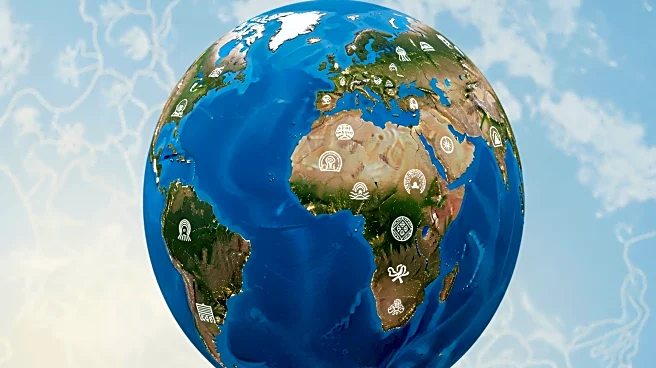What's Happening?
National Geographic has published an educational resource exploring the concept of continents, with a focus on the landmass of Eurasia. The resource explains how continents are defined not only by geographical
boundaries but also by cultural distinctions. Eurasia, for instance, is a single landmass that is traditionally divided into Europe and Asia due to historical and cultural perceptions. The resource also delves into the geological processes that have shaped continents over millions of years, including plate tectonics and the formation of mountain ranges.
Why It's Important?
This educational resource is important as it provides a comprehensive understanding of the complex factors that define continents. By highlighting the cultural and historical reasons for dividing Eurasia into Europe and Asia, the resource underscores the role of human perception in geographical classifications. This knowledge is crucial for educators, students, and geographers as it fosters a deeper appreciation of the interconnectedness of human and physical geography. Additionally, understanding the geological processes that shape continents can inform studies related to natural disasters, resource management, and environmental conservation.
Beyond the Headlines
The resource also touches on the implications of continental drift and tectonic activity, which continue to shape the Earth's surface. This ongoing geological activity has significant implications for natural resource distribution, biodiversity, and climate patterns. Furthermore, the cultural distinctions between continents, as highlighted in the resource, can influence geopolitical relations and international cooperation. By exploring these deeper implications, the resource encourages a holistic view of geography that integrates physical and cultural dimensions.














